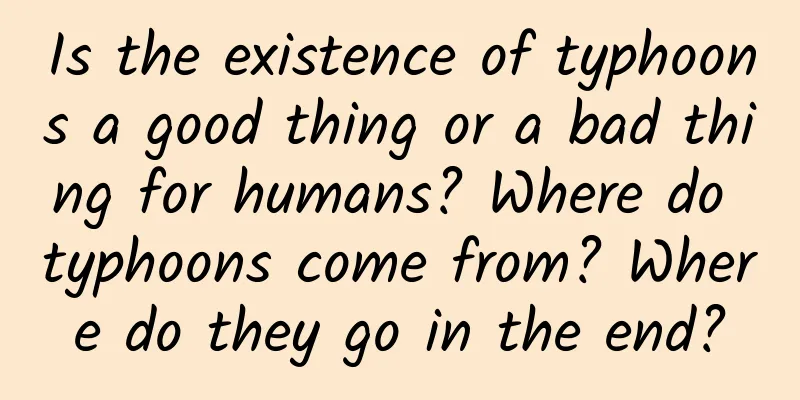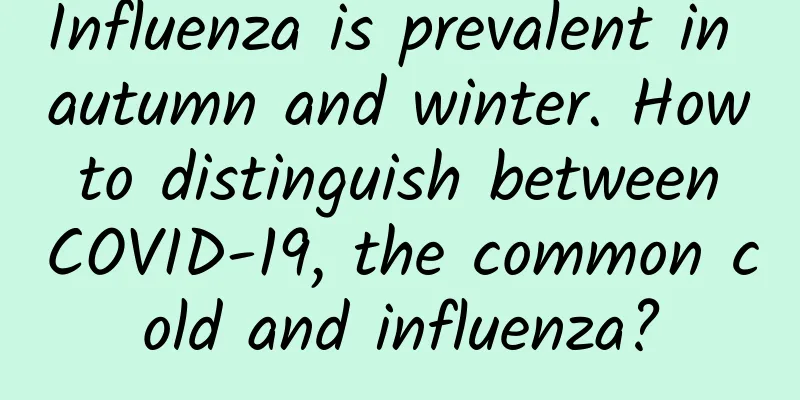Is the existence of typhoons a good thing or a bad thing for humans? Where do typhoons come from? Where do they go in the end?

|
29% of the earth's surface is land, and 71% is ocean. For the inland and deep sea, both are out of reach. Typhoons, tropical cyclones generated on the ocean surface, are a rare link between the deep sea and the inland. Typhoons are a product of nature. For humans, they have both good and bad sides. Its benefits: It can bring abundant fresh water to the land; it can eliminate drought; it can regulate the heat in tropical and subtropical regions near the equator; its huge energy flow keeps the earth's atmosphere in thermal balance and balances the climate between the frigid and temperate zones; it can change the marine ecology and increase fish production. Disadvantages: Typhoons are a type of weather system that is highly destructive and disastrous, as they carry a rich water vapor system and extremely high wind speeds. Typhoons often bring strong winds and rainstorms, causing huge waves on the sea, which seriously threatens navigation safety. The storms and rainstorms brought by typhoons after landing can destroy crops, various buildings and facilities, etc., causing huge losses of life and property. The names of typhoons vary depending on where they occur. Typhoon is the name used in China, the Philippines, and Japan; it is called a hurricane in the United States; and it is called a cyclone in the Southern Hemisphere. There are eight sea areas in the world that are the main sites of typhoons. Northern Hemisphere: 5 sea areas: the western and eastern North Pacific, the western North Atlantic, the Bay of Bengal and the Arabian Sea. Typhoons rotate counterclockwise in the Northern Hemisphere. Southern Hemisphere: Western South Pacific, Western South Indian Ocean and Eastern South Indian Ocean. Typhoons in the Southern Hemisphere are clockwise rotating cyclones. According to the definition of the World Meteorological Organization, a tropical cyclone is called a typhoon only when it forms on the ocean surface and grows to a point where the wind speed at its center reaches level 12 or above (wind speed 32.7 meters per second). At this time, the World Meteorological Organization will give it a name. The specific names of typhoons are provided by 14 countries and regions of the World Meteorological Organization's Typhoon Committee. Each member provides 10 names to form a typhoon name library, which has 140 names and is used in a circular manner. These names are the names of certain animals, plants, foods, etc. Some names are derived from certain adjectives or beautiful legends, which are easy to understand and have beautiful meanings. Regardless of whether the typhoon strengthens or weakens during its journey, the name will be used from the time it is named. At the same time, the typhoon will also be given a four-digit number. The first two digits of the number are the year, and the last two digits are the order in which it was generated in that year. For example, "Tali" is numbered 2304, which means the fourth tropical storm in 2023. If a typhoon causes a major disaster or casualties due to its destructive power, the members of the Typhoon Committee will apply to remove it from the list. For example, Typhoon Meranti, the 14th typhoon in 2016, landed in Xiamen, Fujian Province that year and caused 29 deaths, 49 injuries, 18 missing persons, and economic losses of approximately US$2.5631 billion. After removal, the Typhoon Committee will add the name of the tropical cyclone. According to international practice, the wind force near the center of a tropical cyclone is divided into six levels . Tropical depression: maximum wind speed is 6~7 (10.8-17.1 m/s). Tropical storm: maximum wind speed is 8 to 9 (17.2 to 24.4 m/s). Severe tropical storm: maximum wind speed is 10 to 11 (24.5 to 32.6 m/s). Typhoon: Maximum wind speed is level 12~13 (32.7m/s~41.4m/s). Severe typhoon: maximum wind speed is 14~15 (41.5m/s~50.9m/s). Super Typhoon: Maximum wind speed ≥ Level 16 (≥51.0m/s). The life cycle of a typhoon 1. Embryonic stage: On a sea in the northern hemisphere, seagulls fly in groups, the sky is blue, and the sea is blue. The sun is scorching the ocean, and a large amount of seawater evaporates into the air, gradually forming convective clouds. The hot air in the convective clouds flows upward, and the surrounding cold air replenishes it in time. After being heated, the cold air rises again, and the external cold air replenishes it again, and the cycle continues. The air in the center of this cloud layer keeps falling out, and the central air becomes thinner and thinner, forming a low pressure center. Due to the influence of air pressure changes and the deflection force of the earth's rotation, a counterclockwise rotating atmospheric vortex gradually forms, which is a tropical cyclone, the early embryo of a typhoon. 2. Growth stage: The key to the growth of tropical cyclones is the ratio of energy input to output. If the input energy is greater than the output energy, the tropical cyclone will gradually strengthen, otherwise it will weaken. After the formation of a tropical cyclone, because its central air pressure is relatively low, the surrounding air continues to rush to the center of the tropical depression, and the cold air rises when it encounters heat, and this cycle continues. If there is a continuous supply of energy on the ocean surface, energy is continuously input for the growth of the tropical depression, and the input energy exceeds the output energy, then the air in the tropical cyclone will rotate more violently, the maximum wind speed in the center will gradually increase, and the central air pressure will further decrease. The tropical cyclone continues to grow. 3. Mature stage: When the maximum wind speed near the center of a tropical cyclone reaches a certain standard, it will be upgraded to a higher level. Tropical depressions are upgraded to tropical storms, tropical storms are upgraded to severe tropical storms, typhoons, and even to severe typhoons and super typhoons. After a long growth path, typhoons become very powerful and have the ability to cause disasters, with heavy rainfall, strong winds, and the ability to cause local severe convection. If they land at this time, they will bring strong winds and rainstorms wherever they go, and will also bring storm surges to coastal areas. It can be said that they are reckless and cause heavy losses of life and property. 4. Extinction stage: There are two extinction paths for typhoons. One is that after a typhoon lands on land, it will quickly weaken and disappear due to ground friction and insufficient subsequent energy supply. Even if it disappears, the remaining clouds will bring long-term heavy rainfall to the places it passes through. The other is that when the typhoon moves northward to a higher latitude, cold air will enter its rear, and the tropical cyclone will become a temperate cyclone and then gradually disappear. |
Recommend
Plastic bottles, glass bottles, paper packaging, do you know the secrets of beverage packaging bottles?
When the weather gets hot, the first thing people...
QQ will launch the online number cancellation function: it can be realized in QQ 7.9.9 and above
The QQ number deregistration function will be imp...
Case analysis: How to plan a new customer acquisition campaign?
The core position of the "content is king&qu...
Deconstructing the underlying logic behind the growth of new domestic beauty brands!
In the cosmetics category, there are two phenomen...
This disease with a mortality rate of nearly 100% is hidden around you and me, but many people don’t know it.
Today is rabies day, let’s talk about it seriousl...
What should be the first step when taking over a new operation?
Do you understand the product? Know a colleague w...
Faurecia to build third plant in Morocco to produce interior and emission control parts
According to foreign media reports, French automo...
"Flying geese stepping on snow and mud"! The 85-year-old academician made three wishes on his birthday...
"The seabed is so beautiful, with sea lilies...
Apple and Samsung's market share has both declined. Why are domestic mobile phones rising?
In the first quarter of this year, Apple and Sams...
What should you do if your child’s myopia causes trouble and his eyes “go on strike”?
Dear parents, hello! Nowadays, the speed of techn...
Bullwhip recipes - How to make bullwhip delicious - Home cooking
Since ancient times in China, the saying "yo...
Chinese scientists have made new achievements!
Chinese scientists have achieved precise total sy...
Baofeng Technology's profit dilemma: What are the reasons for not adapting to the local environment?
After opening at the fifth limit down on July 17,...
Zhihu’s traffic pool!
All things are difficult at the beginning. Friend...
New results from collision! A sensitive probe is now available to explore the difference between positive and negative matter
The Beijing Spectrometer III (BESIII) experiment ...





![[Smart Farmers] Debunking rumors: Will eating genetically modified foods change a person’s genes?](/upload/images/67f24631e1d92.webp)



